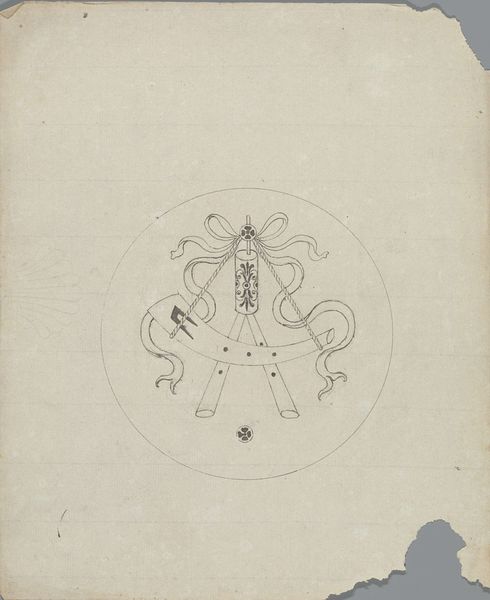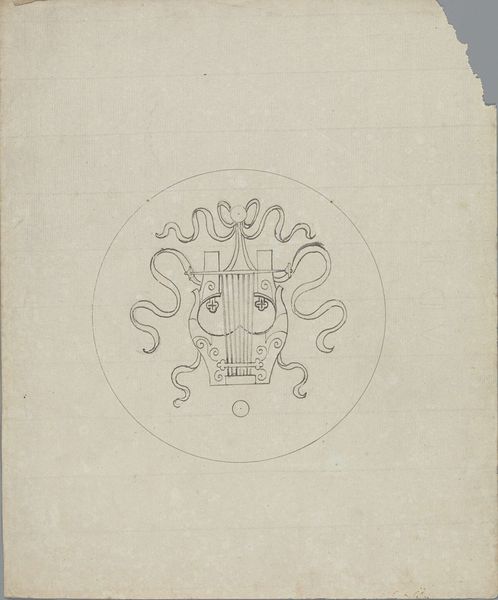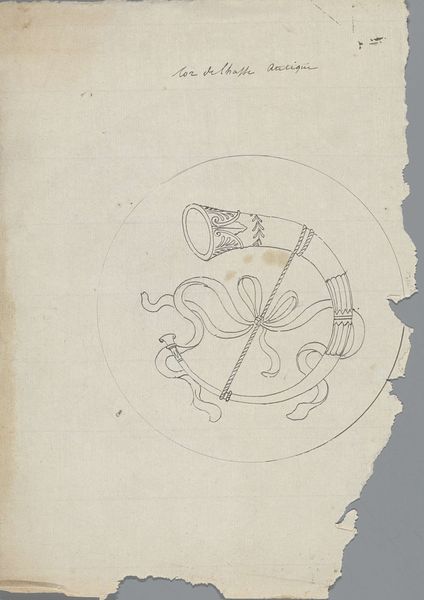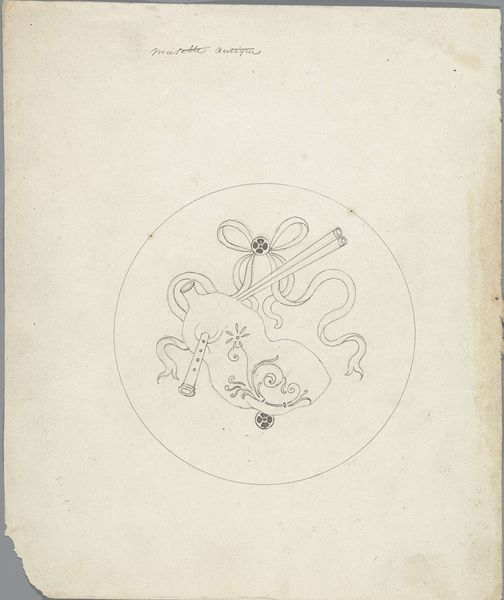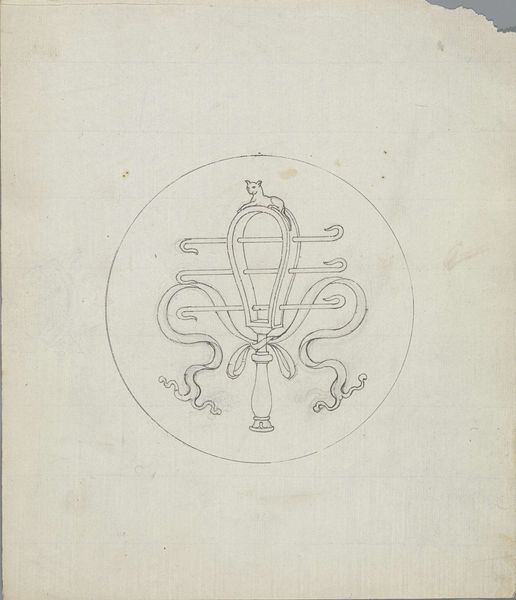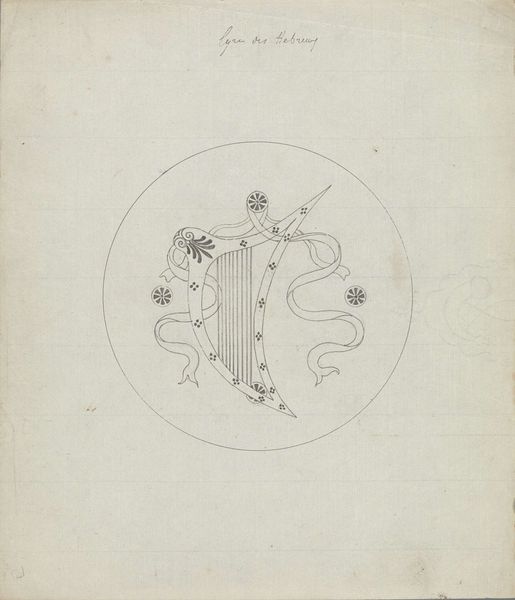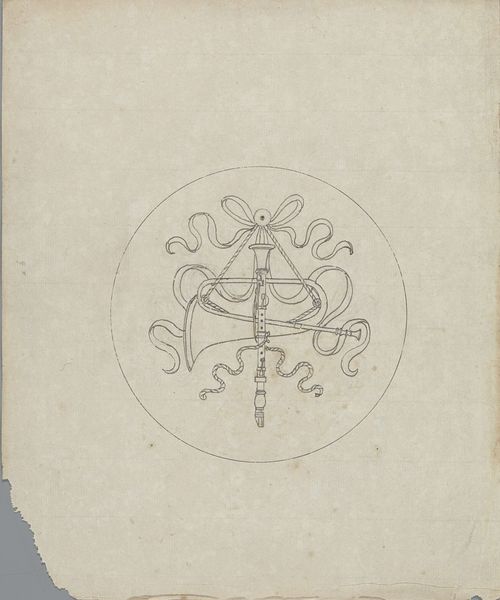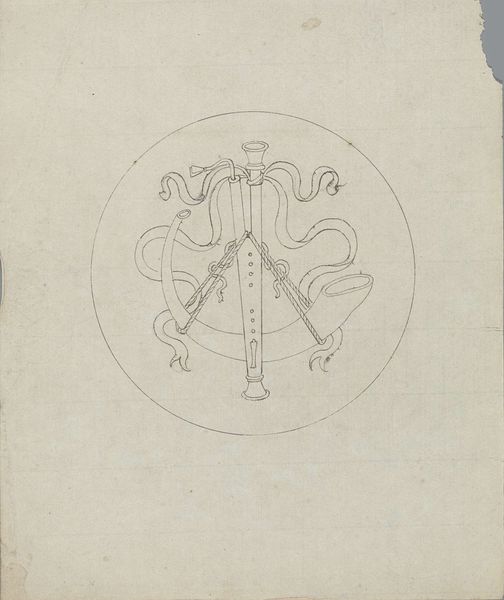
drawing, paper, ink, pencil
#
drawing
#
paper
#
ink
#
geometric
#
pencil
#
line
Dimensions: height 253 mm, width 208 mm, diameter 123 mm
Copyright: Rijks Museum: Open Domain
Curator: Welcome. The artwork before us, known as “Lier,” comes from the hand of Pierre Félix van Doren, created sometime before 1828. Executed with ink and pencil on paper, this drawing showcases van Doren's aptitude with simple lines to evoke a refined emblem. Editor: My initial response to this work is one of understated elegance. The circular form enclosing the lyre provides a sense of completeness. The lines are delicate and refined, with a precision suggesting deliberate construction. The scale of the work itself seems intimate, beckoning closer inspection. Curator: Indeed, the seemingly simple imagery offers an interesting glimpse into the cultural context of the early 19th century. The lyre, often seen as an emblem of the arts, particularly music and poetry, symbolized both artistic achievement and refined sensibilities among certain social echelons. In the emerging nationalisms of the time, these emblems were a way to cultivate a sense of collective identity that hinged on shared appreciation of art and culture. Editor: Agreed, and focusing on form alone, note how Van Doren contrasts the rigid, vertical lines of the lyre strings with the flowing curves of the surrounding ribbon and flowers. Semiotically, the image is self-contained: The central lyre acts as the signified; music or art more generally functions as the signifier; finally, its being bordered by flowers suggests decoration and finery as signs of aristocracy. Curator: The presence of floral motifs around the lyre adds another layer of meaning. Flowers have long been associated with beauty, ephemerality, and sometimes even remembrance, implying here perhaps the eternal power of music, or a desire for permanence through artistic endeavor amidst societal changes. Moreover, there could be more private meaning to these flower designs. Without more biographical context, of course, this is merely speculation. Editor: Yet speculation itself is essential, is it not? Ultimately, regardless of original intent, viewers construct meaning for themselves. To that end, the formal construction of the composition allows individual access to contemplation and meaning-making regardless of class, social standing, or gender. Curator: Fair point, Editor. What Van Doren managed was not just a symbol of his era, but a reflection on the enduring importance of artistic pursuit amidst personal change, social turmoil, and the human longing to feel connected to both our shared history and to the unique possibilities of human potential. Editor: An assessment I wholeheartedly endorse. Van Doren’s creation speaks to us through the years because its semiotic forms allow our reading, allow our meanings. Thank you for offering the rich history behind “Lier.”
Comments
No comments
Be the first to comment and join the conversation on the ultimate creative platform.
